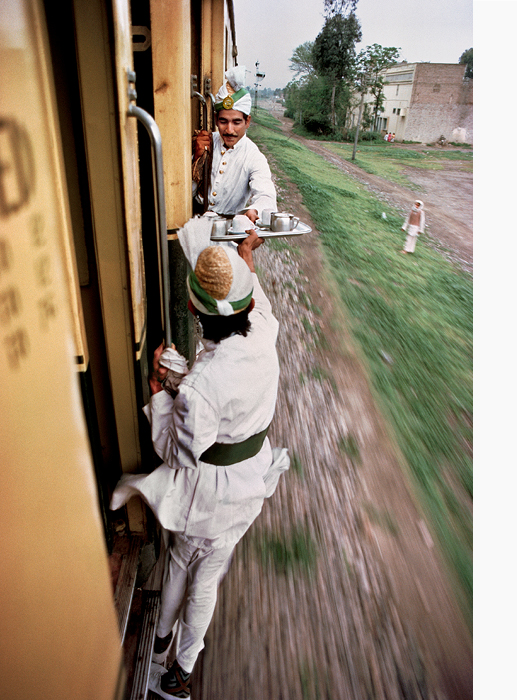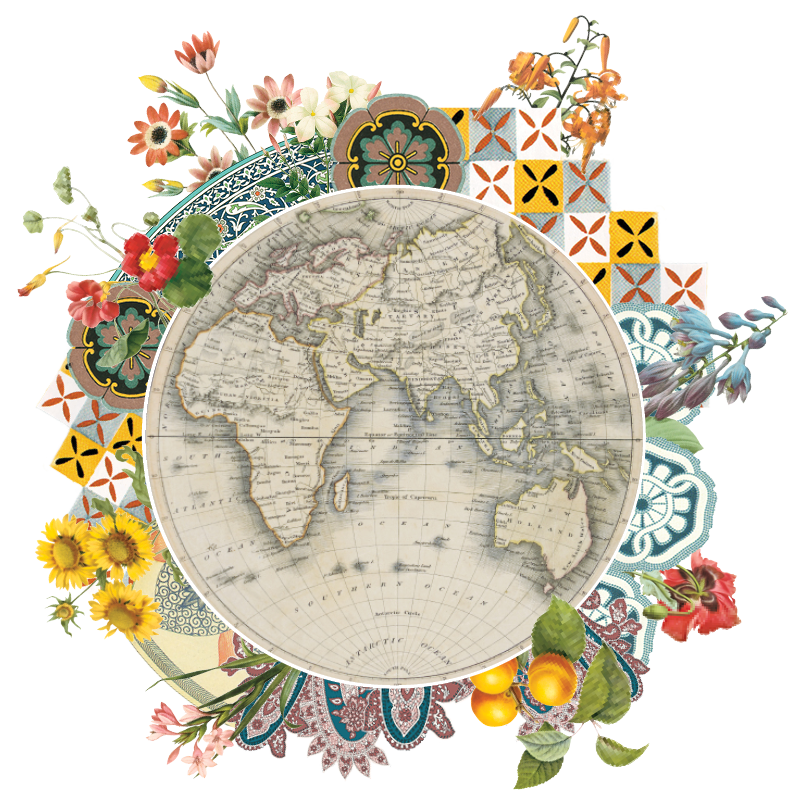Steve McCurry
One of the greatest living photographers, Steve McCurry’s career spans continents, cultures and nearly every conceivable human experience. The legendary lensman talks Adrian Potts through the wanderlust that sustains him, his “incredible endless fascination” for India, and his most memorable photos.
- Category:
- Interviews
- Words By:
- Adrian Potts
- Photography:
- Steve McCurry
- Published:
- January 03, 2019
American photographer Steve McCurry has devoted a lifetime to wandering city streets and remote regions with a camera virtually welded to his hands, relentlessly pursuing chance encounters and the right alchemy of light, color and composition to reveal the inner-lives of those he meets.
Most synonymous with his images from Asia and the Middle East, his “Afghan Girl” portrait of the young refugee Sharbat Gula on the cover of National Geographic in 1985 is doubtlessly one of the best-known photos of the 20th century. Framed by a torn shawl, the piercing gaze of her clear green eyes became a window into and emblem of the hardship of those displaced by a hopeless conflict.
It is one of some 350 images in the newly released visual biography of his career, A Life in Pictures. Compiled and written by his sister, Bonnie McCurry, it casts new light on the forces that shaped him early on and showcases his most memorable pictures and an assortment of unpublished works.

The sheer scope of humanity on display is testament to McCurry’s dedication to get beyond the easy clichés of a country or culture. Page after page is populated with ordinary people going about life in some of the most extraordinary places and situations on the planet, often with an unexpected flourish. We see a mother in Beirut casually peeling potatoes on her balcony against the backdrop of bombed-out apartment blocks; a young man in Kabul resting against his bicycle clutching a bouquet of pink carnations; and a tailor transporting his sewing machine neck-high above the floodwaters of Gujarat after monsoonal rains.
McCurry began working internationally after quitting his job as a photographer at a Philadelphia newspaper at the age of twenty-seven with a one-way ticket to India; his experiences abroad up to that time having nurtured a fascination with far-off places. “Early on I decided I really wanted travel to be part of my career,” he explains from his New York studio. “That wanderlust and urge to see the world has carried me through the next fifty years.”
He would spend some two years overseas after arriving in India, following the path of his hero Henri Cartier-Bresson, the legendary lensman and co-founder of Magnum Photos whom he would later befriend as a member of the seminal agency. It was during these early adventures that McCurry learned to stop and observe. “If you wait,” he realized, “people will forget your camera and the soul will drift up into view.”
A Life in Pictures is a tribute to a life behind the lens and a celebration of McCurry’s vision to chronicle ancient and sometimes vanishing ways of life and to capture the common thread of humanity in the people he photographs, no matter their circumstances.
You’ve returned to India countless times since your first visit. What compels you so much about that country? One of the strengths of India for me is that it’s very different from where I grew up, so you’re continually learning about these new things and being bombarded by all the visual differences. You’re struck by how many people are there and all the different religions and cultures swirling around. There is also extreme wealth and extreme poverty. It’s an incredible place to wander and explore. With such a vast country I kept finding new places and going back for different reasons—it’s just an incredible endless fascination.
One of the early photos in the book is of two waiters passing a tray between the cars of a fast-moving train in Pakistan. Tell me about that scene. We had ordered tea and my assistant said, “You’ve got to see this.” The door was locked between our car and the kitchen car, and they had to pass the tea on the outside of the train. So he held my legs and I leaned out of the window and made a couple of pictures. I only made two or three frames because it was a bit dangerous. I’m just glad the assistant didn’t let go of me.

Perhaps a lesser-known portrait that stands out is the village boy in Afghanistan. What were the circumstances of that photo? In that area of Nuristan there’s this legend that some of Alexander the Great’s soldiers stayed behind and hence the blue eyes and blond hair and European look. It’s very common in that part of Afghanistan to meet somebody who looks like they could be English or German or French, and that’s what struck me about him. You don’t think of that kind of look from an Afghan. He has such an earnest, serious, almost adult look, I guess partly because his country had been at war for twenty years. He didn’t seem like he had much humor in his expression.
What have you observed about human resilience having traveled through warzones and some of the toughest places on the planet? I think life-preservation is a very strong instinct and that people can adapt to almost anything. Somebody can have a very posh home in a place like Syria one minute and be living in a tent in a refugee camp the next, and they just have to learn to adapt. There’s no alternative. The human spirit is resilient and we persevere. We have this fortitude that propels us to make the best out of what we have because the life force is strong.
You also manage to capture the quieter and happier sides of ordinary life. Has there been a particularly uplifting assignment you remember? I would have to say a body of work I did on the Buddhist world in different countries and cultures, in Tibet, Burma, Bhutan, Nepal and India. I found those places full of contentment and people seemed to have an element of compassion and caring in their daily lives.
Another of the really striking portraits is the photo of the father and son with their pet chihuahua in Marseille. What was their story? They were a Roma family, and I saw the son, he was very handsome and had his little dog, which he was very fond of, and his father had this dignified look. I thought it was a very different look at that community. And the relationship between the father and son was tender and the connection was there with the three of them together. It was a rather quick portrait but I liked it.

Do you go out of your way to get beyond the cliché of a culture in that way, or is that more instinctive? If you’re in a country where you’re familiar with what imagery has preceded you, I think it’s always best to try to find a new way of looking at a place or a situation or even a person in a different context. If you go to Paris, there are so many wonderful really super professionally made postcards of the different monuments with some really outstanding pictures—they’re fine, there’s nothing wrong with them—it’s just that I want to look at things in my own different way. That’s the challenge. Take the Taj Mahal: we’ve seen it a million times, so what else can be said about it? What new way of looking at it? Can I look at it from the left or the right?
And there are photos in the book where you accomplished that, with the people tending to the wheat field behind the Taj Mahal, for example. Well, it just literally means taking the time to walk around and observe it to see if there’s anything happening apart from the classic view. Do the people live or work here or is there a shepherd? It’s just a question of working outside the parameters. The other thing is, I probably spent, at different times, a week or more wandering around and looking at different angles. Most people who go to the Taj Mahal spend maybe an hour. I think if you spent more time, you’d probably discover more things.
When you travel for pleasure, do you ever leave your camera at home? No, no, no, I always have a camera with me. Now, if I’m going to my studio, I’ll take my cellphone with me which has a camera. But when I’m traveling, I always have my camera.
Steve McCurry: A Life in Pictures, by Bonnie McCurry, is available worldwide now.

Where was your last vacation? I don’t take vacation. I love what I do, so I never feel the need to stop doing it.
Where will your next vacation be? Home. It’s where I go to truly relax.
The thing you can’t travel without? My camera is always with me.
Plane, train or automobile? It depends on the place.
The people you’d most like to sit next to on a long-haul flight? My family.
What is your in-flight ritual? Just relax, try to find a good film to watch.
The language you wish you spoke? French or Italian
When were you happiest while traveling? Burma because it’s a very peaceful and relaxing country. The people are hospitable and the quietness allows for contemplation.
Desert island or downtown? Downtown. I like the strong energy that big cities possess.
If you could live at any hotel, which would it be? Aman Hotel in Bhutan.
What is your room service indulgence? A bottle of pinot noir.
The strangest place you’ve spent a night? Cleveland, Ohio.
What is your favorite market? Either bazaar in Marrakech or Istanbul. Both are equally interesting.
If you could travel to any place in any epoch, which would it be? Italy during the Renaissance.
What are the show-off spots in your hometown? Washington Square Park and Grand Central Station.
Which places would you happily spend a weekend, a week, a month, and a year?
A weekend in Havana.
A week in Provence.
A month in Rome.
A year in Kyoto.
Your biggest extravagance on the road? Spending time reading a good book.
Describe a memorable meal from your travels. Having a meal full of white truffle with some friends in Torino.
Travel hell is? Navigating through airports.
Where are you ashamed that you’ve never been? I’ve never been to Iran but would very much like to visit.
Three favorite stores on earth? The Strand bookstore in New York City, GUM department store in Moscow, and Grand Bazaar in Istanbul.
Most treasured travel memento? A bronze statue of the Buddha given to me by a Tibetan monk in Lhasa.
Why do you travel? Because travel is a continual learning experience, full of adventure.

Christine Muhlke has over two decades of experience and connections in the food, travel, fashion, culture, and design worlds. The founder of Bureau X food consultancy, she has been an editor at Bon Appétit, T Magazine, and The New York Times Magazine.